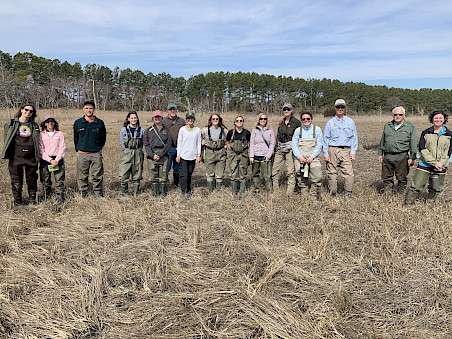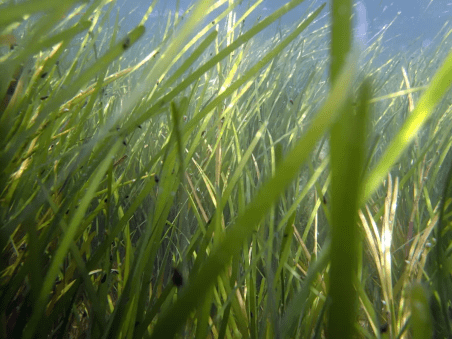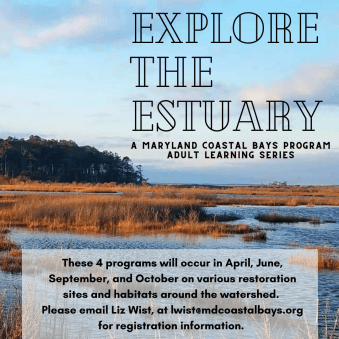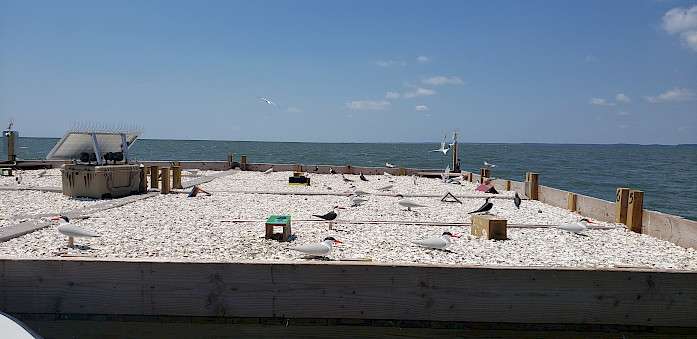Saltmarshes gain a new defender

Saltmarshes are another indicator of ecological health. In 2020, MCBP partnered with the US Fish & Wildlife Service to establish a Saltmarsh Assessment and Restoration Team (SMARTeam). The purpose of this partnership is to evaluate the health of saltmarshes in the Coastal Bays watershed. Once marshes that need restoration are identified, the Team works with their public or private landowners to determine the best restoration techniques to make the marsh more resilient to climate change and sea level rise. Additionally, the Team emphasized marshes that are considered critical habitat for threatened species like the saltmarsh sparrow. This collaborative effort has grown to include partnerships with the MD Department of Natural Resources, the University of Maryland Eastern Shore, the Lower Shore Land Trust, and the University of Maryland Center for Environmental Science.
Management actions to increase water clarity are needed to improve seagrasses

In the MD Coastal Bays, there are not many clear trends in specific indicators. Water quality indicators range from moderate to very good. Dissolved oxygen levels are moderate and have been lacking for several years. Overall, nutrients and Chlorophyll a scores are promising, but conditions vary greatly by region. Water quality greatly affects seagrasses. Seagrasses are struggling due to a number of factors, including high water temperatures and poor water clarity. Seagrasses have disappeared north of the Ocean City inlet and have been replaced by seaweeds which are more tolerant of poor water quality and low light. The two main species of seagrass in the bays are widgeon grass and eelgrass—the dominant is eelgrass. Eelgrass populations are projected to decrease even further as water temperatures continue to rise. While widgeon grass may fill the niche in most areas, there will be ecological consequences, such as change in the timing of spring habitat for crabs and fish. Management efforts to reduce nitrogen and phosphorus will facilitate recovery of seagrass, despite climate stressors (e.g. temperature, CO2 concentrations, and sea-level rise), by improving water clarity.
Inspiring conservation

The Explore the Estuary four-part education series began in 2021 to inspire adult watershed residents to continue to broaden their knowledge of the Coastal Bays. Each hybrid program consisted of a virtual and a field component that provided an in-depth look at our natural world and conservation issues within the watershed. Over 100 community members participated in programs about coastal birds, restoration, monitoring techniques, and watershed gardening. The programs also featured an expert who contributed professional knowledge on the program focus and provided the opportunity for participants to immerse themselves in watershed restoration work.
Providing nesting habitat

The Colonial Nesting Bird Platform is a collaborative effort between the Maryland Coastal Bays Program, Audubon Mid-Atlantic, and the Maryland Department of Natural Resources to provide much-needed nesting habitat in the Maryland Coastal Bays for colonial waterbirds. It was installed in May 2021 and consisted of wooden rafts joined together by dock hinges to function as one unit that flexes with wave action. The platform successfully hosted 23 common tern nests that produced 36 chicks. It was removed from the bay for the winter and will be enlarged in 2022.
